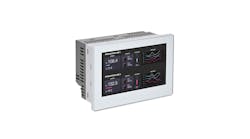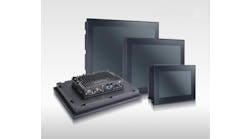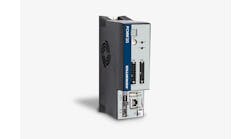In this video, Nate Holmes of National Instruments walks us through the components used in an advanced semiconductor processing machine. The machine includes a rotary mechanism with pneumatic actuators to handle freshly diced wafers, which are identified by a gigabit Ethernet camera to position the stage to pick components of the freshly cut silicon with actuators. Machine motion is handled by brushless servo drives from Kollmorgen. The resulting silicon packages are tracked with a gigabit Ethernet camera on the opposite side of the machine for placement in an X-Y stage. This machine previously processed 12,000-14,000 parts per hour. With the addition of National Instruments’ new CompactRIO 9068, the machine can now process up to 20,000 parts per hour – a 3x improvement in performance.
See my blog post on the introduction of the CompactRIO 9068 discussing the evolution of controllers through increasing use of FPGAs.
Leaders relevant to this content:




